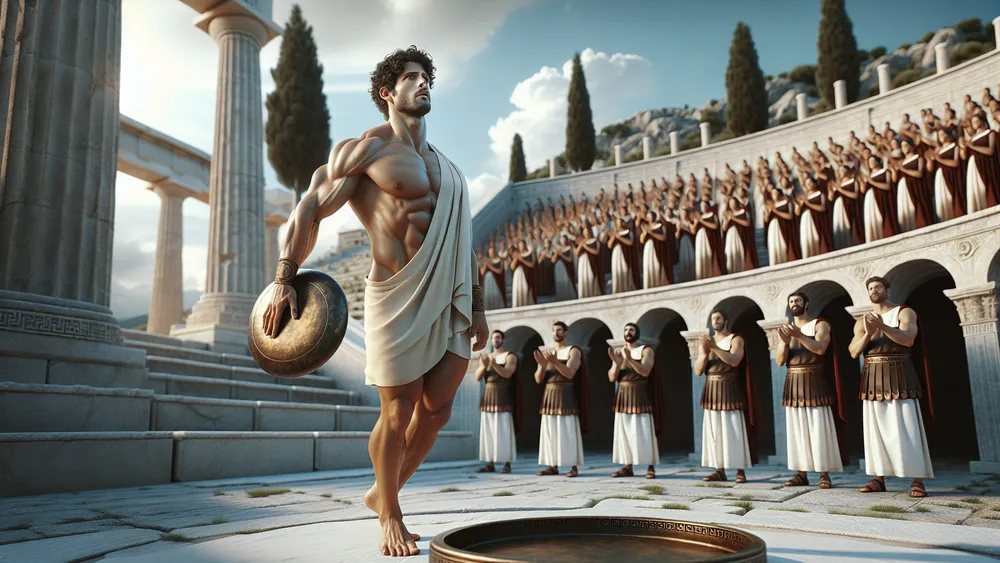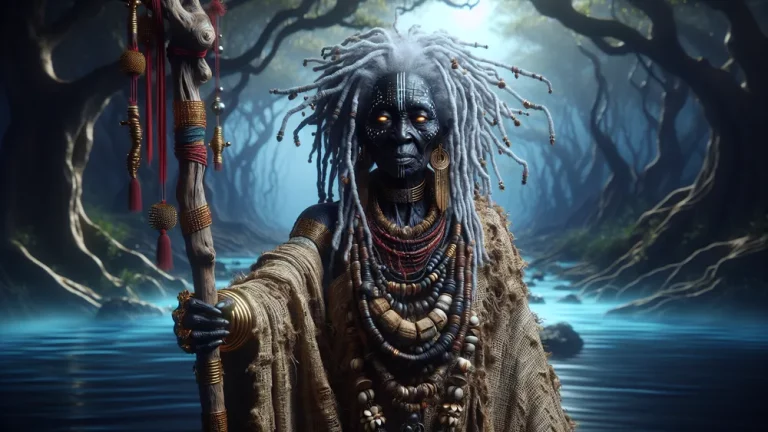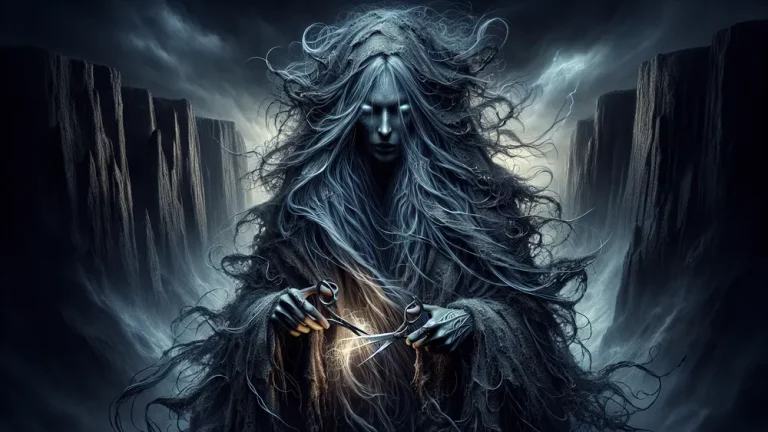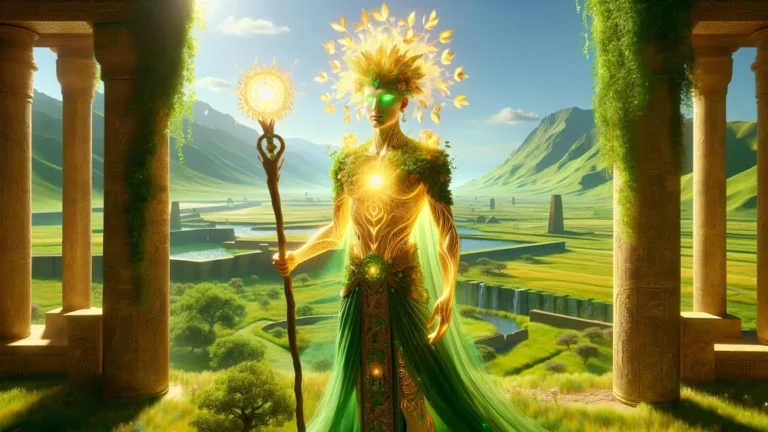Elete: Exploring The Role Of Elite Greek Athletes In History
In ancient Greece, athletics went beyond just being about physical strength. It was deeply tied to religion, myths, and values in society. People thought trying to reach greatness, or what they called arete, was something the gods wanted from them. Events like the Olympic Games were organized for Zeus, the king of the gods, and other divine figures.
Key Points:
- Elete represents effort, personal excellence, and hard work in Greek mythology.
- She is one of the Horai, who stand for order, balance, and seasonal changes.
- Unlike Nike (victory) or Tyche (luck), Elete focuses on striving for success through discipline.
- Ancient Greek athletes admired her ideals of persistence and dedication during their training.
- Rituals like sacrifices, hymns, and symbolic acts honored gods, including Elete, during athletic events.
- Stories such as Pheidippides’ marathon link human persistence and divine support to her values.
- Elete’s influence lives on today in ideas about self-improvement and achieving personal goals.
Because of this, the events were very special and meaningful. Athletes focused on traits like strength, focus, and discipline – qualities the gods also had. This created a sense of connection between what humans wanted to achieve and what the gods represented. When thinking about gods connected to athletics, Elete, one of the Horai (the goddesses linked to the seasons and to order), stood out.
She wasn’t as well-known as Nike, who stood for victory, or Tyche, who meant luck, but her role was still important. People saw Elete as a symbol of always working hard and improving. In her own way, she helped shape rituals and traditions by emphasizing the good things about competing.
Athletes in her time were as inspired by these values as modern sports fans are by famous athletes today. By looking at how physical contests and gods connected in this way, we gain a better understanding of ancient Greek life – where myths and athletic performance were always linked.
Elete: Overview and Key Facts
| Aspect | Details |
|---|---|
| Name | Elete (Ἐλήτη) |
| Meaning of Name | The word “Elete” comes from the Greek term eleleu. This was a cry of encouragement that stood for things like effort, determination, and doing everything needed to reach success. |
| Role in Mythology | Elete belonged to the Horai, a smaller group of goddesses responsible for order in the universe and in human society. Among them, Elete was mainly connected to striving for personal greatness and achieving goals. |
| Group Association | The Horai, including Elete, Dike (Justice), and Eunomia (Good Order), worked together to keep things balanced and organized in both nature and human life. |
| Cultural Significance | Elete was thought of as a symbol of hard work and the constant attempt to become better. People linked her especially to those trying to reach excellence, like athletes and artists. |
| Key Symbolism | She stood for the effort people needed to reach their goals, which made her different from goddesses like Nike (Victory) or Tyche (Luck), who were symbols of winning and chance. |
| Connection to Athletics | Many ancient Greek athletes admired Elete. They saw her as someone who brought focus and strength to help them prepare for their contests. |
| Depiction in Art and Texts | Elete doesn’t appear much in surviving Greek art or writing, but people still understand her importance through ideas about personal excellence in places like Greek literature. |
| Religious Practices | Sacrifices, hymns, and prayers were often brought to Elete, usually by people hoping to gain strength and achieve success. |
Who is Elete in Greek Mythology?
To see what makes Elete special in the group of the Horai, it helps to look at how her role connected her to the ideas of greatness and balance. Her story matters because it ties into how ancient Greek athletes found inspiration. By studying what Elete meant, we can better understand her importance in mythology and the culture of her time.
Where Elete Comes From in the Horai
The Horai, which means ‘Hours’ or ‘Seasons’ in Greek, were goddesses who stood for the natural order of time and balance. At first, they were linked to nature’s cycles. Over time, though, people started seeing them as symbols of rules and traditions in society. According to Hesiod’s Theogony, the Horai were daughters of Zeus, the ruler of the gods, and Themis, the goddess of fairness and divine rules.

Their parents connected them to two important things: keeping nature in balance and making sure moral laws were followed. Out of the well-known Horai – Eunomia (Good Order), Dike (Justice), and Eirene (Peace) – Elete’s role is smaller, but still valuable. She focused on personal greatness and individual success.
Elete doesn’t appear much in early writings, but her place among the Horai means she was tied to how people thought about hard work and striving for perfection. Scholars still debate the specifics of her role, as many myths about her are unclear or come from local traditions.
The Horai were considered symbols of balance and control, kind of like how modern laws try to keep order in society. As part of this group, Elete added the idea of personal success to the larger sense of harmony the Horai represented.
She wasn’t as clear or direct as gods like Nike, who stood for victory, or Athena, who brought wisdom and strength in battle. Instead, she helped people focus on working hard and improving themselves. Below is a table showing how Elete compared to her sisters.
| Goddess | Meaning of Name | Domain | Symbolism | Cultural Role |
|---|---|---|---|---|
| Elete | “Effort” or “Excellence” | Striving for greatness | Success that comes with hard work | Inspired people to improve themselves. |
| Dike | “Justice” | Rules that are moral and fair | The balance between right and wrong | Helped keep societies running peacefully. |
| Eunomia | “Good Order” | Orderly government and proper behavior | Stability through following the rules | Represented organized and functional systems. |
The Horai were Greek goddesses symbolizing balance in both nature and society, with Elete emphasizing personal effort and success through hard work.
How Elete Inspired Ancient Greek Athletes
For athletes in ancient Greece, chasing excellence wasn’t just about being strong or winning competitions. It was also tied to deeper, spiritual goals, where the actions of the gods mattered a lot. Among the Horai, Elete stood for sticking to your goals, working hard, and staying disciplined to reach greatness.
Nike, the goddess of victory, stood for the moment of winning, but Elete meant everything that came before – the long hours of training, the focus, and the effort it takes to succeed. Some ancient writings tell us that athletes who trained for events like the Olympics often asked for help from the gods.

Even though Elete doesn’t appear much in famous myths, her focus on effort made her a quiet influence on preparing for big competitions. Unlike Tyche, who stood for random luck, Elete reminded people that success came from consistent hard work.
Athletes honored Elete in different ways to connect with the idea of greatness. They used rituals, prayers, and offerings to show their commitment to hard work. These actions reminded athletes what it meant to give everything they had. Below are a few of the ways people honored her:
- Hymns of Dedication: Athletes wrote or sang songs about effort and discipline, which matched what Elete stood for.
- Ritual Sacrifices: In ceremonies, people made offerings to gods connected with the Horai, linking Elete to their prayers.
- Symbolism in Training: Sweat and physical effort were seen as part of honoring what Elete stood for, as they trained hard for their goals.
- Statue Offerings: While statues of Elete weren’t common, athletes sometimes dedicated memorials to their own successes in ways that connected to her ideals.
- Participation in Games as Worship: Competing in big events like the Olympics was seen as a way to honor the gods, including Elete, by showing excellent effort and discipline.
How Athleticism and the Divine Were Connected in Ancient Greece
In ancient Greece, the link between sports and honoring the gods shaped much of how athletes lived and competed. It helps us gain a better sense of the traditions they followed and the ideas they valued. Through these practices, sports became more than contests of strength – they connected personal effort to something greater. Let’s take a closer look at how these rituals became a central part of life.
The Rituals Greek Athletes Followed
In ancient Greece, athletes believed their physical efforts were closely tied to winning the gods’ favor, especially in events like the Olympics. Competing wasn’t just about skill or strength – it involved honoring the gods and following traditions meant to please them. To boost their chances of success, athletes followed rituals rooted deeply in devotion. For example, sacrifices were central to their preparation.

Animals like bulls, goats, or sheep were offered to gods such as Zeus, who was the supreme god of the Olympics. At Olympia, athletes visited a special altar to Zeus. It was built from the ashes of sacrifices made before, and athletes performed their gestures of respect there. Athletes also swore sacred oaths inside the Bouleuterion, a building near the stadium.
These oaths were promises to compete fairly and train hard. In these formal settings, they called on the gods to be their witnesses as they pledged their word. By doing this, they reinforced the idea that competing was not just a personal challenge – it was part of a bigger connection to divine order. After winning, some athletes gave part of their prizes or even dedicated statues or plaques to thank the gods.
Others took part in ceremonial processions, wearing symbolic clothes to honor their chosen deities. Sometimes, dreams or visions were seen as messages from the gods. Athletes would follow up by offering gifts to acknowledge these divine signs. These acts reflected their belief that worship and competition went hand in hand, while the community around these rituals supported shared cultural values.
Here is a breakdown of typical rituals practiced by ancient Greek athletes:
- Animal Sacrifices: Offering animals like bulls, goats, or sheep to gods such as Zeus before competing.
- Sacred Oaths: Making promises of fairness and hard work in front of the gods.
- Dedications of Prizes: After victories, athletes donated winnings and statues to thank their gods.
- Processional Ceremonies: Parading in symbolic clothing to honor their gods before or after events.
- Visitation of Altars: Performing rituals and prayers at sacred sites like the altar of Zeus.
Stories About Divine Athletes and Elete’s Impact
One well-known myth that shows how divine help and human persistence worked together is the story of Pelops and his dangerous chariot race against King Oenomaus. King Oenomaus had a rule: anyone hoping to marry his daughter, Hippodamia, had to beat him in a race, and losing meant death. Pelops, facing this life-or-death challenge, turned to Poseidon, the god of the sea, for help.
Poseidon, fond of Pelops, gave him a special chariot and horses that were faster than any others. But winning wasn’t just about divine help – it also depended on Pelops’ own plans. He convinced Oenomaus’ charioteer, Myrtilus, to tamper with the king’s chariot, which gave Pelops the victory and Hippodamia as his wife.
This story wasn’t just about winning through divine support – it also meant showing how effort and careful preparation were critical, ideas strongly connected to Elete. Though the myth doesn’t mention her directly, her link to persistence and hard work is clear. The story of Pheidippides, the legendary runner, offers another example of extreme effort and possible divine influence.

After winning the Battle of Marathon, Pheidippides ran nearly 26 miles to Athens to deliver the news of Greece’s victory over Persia. Some versions of the story say his amazing endurance came from divine help, perhaps symbolized by Elete and her connection to effort. Although ancient writers like Herodotus don’t mention Elete by name, the focus on persistence and physical strength ties to her ideals.
This story later inspired the modern marathon, an event that remembers Pheidippides’ incredible dedication to delivering a message for his people. In stories like these, athletes such as Pelops and Pheidippides showed that greatness wasn’t just about victory.
They embodied the ideas of effort and divine help working together, which were tied to Elete’s role. Unlike Nike, who symbolized winning outright, or Tyche, who stood for luck, Elete represented the process needed to achieve greatness. Through these myths, it’s easy to see how the Greeks valued both human strength and the support of gods like Elete in their pursuit of excellence and arete (perfected skill).
Traits of Top Ancient Athletes
The stories about divine athletes and their hard work help us understand the values that the ancient Greeks cared about most. These stories give us hints about what the Greeks admired in their champions, like their strength and efforts. Now, let’s focus on the traits that set these people apart!
Linking Athletic Traits with Divine Inspiration
For ancient Greek athletes, traits like arete (excellence), andreia (courage), and ponos (hard work) weren’t just personal strengths. These qualities were seen as connections between their efforts and the gods’ support. The idea of arete wasn’t limited to being physically strong. It also included living righteously and staying mentally tough, which made it the ultimate goal for those striving for greatness.
Bravery, known as andreia, meant being unafraid to face risks during events where danger was common, like during the brutal sport of pankration. For someone to truly succeed, they had to bring both courage and skill into such intense situations. Similarly, ponos – the ability to work hard and dedicate oneself to extreme training – was seen as a way to honor deities like Elete.
For the Greeks, this kind of hard work symbolized a deep respect for the gods.
Today, athletes give their all to reach their goals. The ancient Greeks had a similar view, treating excellence as something both human and divine. Below is a summary of the core traits they admired most:
- Arete (Excellence): Striving for complete physical, mental, and moral perfection to become the best you can be.
- Andreia (Courage): Showing bravery by taking on challenges, even in situations that involve danger or risk.
- Ponos (Hard Work): Valuing effort and dedication as a way to achieve greatness while respecting divine ideals.
Ancient Greek athletes believed that striving for excellence, showing courage in risky situations, and working hard were vital qualities that connected human effort with divine support.
Physical Training and Daily Life in the Palestra
The palestra was the main place where athletes trained in ancient Greece. It wasn’t just a place for exercise. It was also an area where people met and gathered to focus on physical improvement and personal growth. Most cities in Greece had these spaces. They were open courtyards, with walkways built around them, lined by tall columns.
Trainers, who were called paidotribai, worked closely with athletes, guiding them through various kinds of activities. Daily routines often included warming up with stretches or light movements and then moving on to tougher exercises like wrestling, boxing, or pankration. Pankration was especially intense. It was a mix of striking and wrestling techniques and had almost no rules.
Apart from combat sports, athletes also trained in running, discus, and long jumping to prepare for competitions. Oil played a big role during these sessions. Olive oil was rubbed on their bodies – partly for protection during workouts and partly to clean up afterward. After training, athletes would scrape off dirt and sweat using a special tool called a strigil. This method was a critical part of their cleaning routine.
Their training wasn’t easy. It followed strict plans that focused on both building physical strength and improving mental discipline. Everything they did aimed at getting ready for events like the Olympics. The palestra, however, wasn’t just about the body. In many cases, it was a place where ideas were shared, and people talked about serious topics. Athletes often met philosophers in these courtyards, having conversations about ethics and what it meant to succeed.
Socrates himself admired working out and believed it was important for balancing the mind and body. Many athletes started their mornings with training and used afternoons for resting or talking to others. Some, during the evenings, learned music or other skills. The palestra was more than a gym. It was a space where people in ancient Greece came together to grow their physical, mental, and moral potential.
The Gods and Nature: A Look at Greek Forces
In ancient Greek mythology, gods and nature were closely connected. This connection helped the Greeks make sense of the world around them. From the mighty Zeus, who ruled the skies and storms, to Gaia, representing the Earth itself, nearly every part of the environment was linked to a divine figure. These links weren’t just about physical things like wind or water.
They also included ideas and qualities, such as victory (Nike), justice (Dike), and effort (Elete). For the Greeks, the gods and the natural world were tied together so deeply that they couldn’t be separated. Everything they believed in – from physical forces to human ideals – was part of one system.
This way of thinking created a world where nature and spiritual beliefs were part of the same story. To understand these forces better, you can check out a list of Greek Abstract and Natural Forces. Through their gods and ideas, the Greeks developed stories that connected their everyday lives to the world around them. These stories brought together both visible things and ideas.
It wasn’t just about the environment – it was also about the values they believed in.
FAQs
1. Who are the Horai, and how does Elete fit into this group?
The Horai are goddesses of order and aspects of civilized life, and Elete fits into this group as the personification of excellence and triumph.
2. How did Elete differ from Nike or Tyche in mythology?
How Elete differed from Nike or Tyche in mythology lies in her focus on personal excellence and effort, whereas Nike embodied victory and Tyche represented fortune or chance.
3. What religious rituals were performed by athletes to honor the gods?
Religious rituals performed by athletes to honor the gods included sacrifices, prayers, and offerings aimed at securing divine favor and embodying traits like excellence and perseverance.
4. Is Elete frequently referenced in surviving ancient texts or art?
Elete is infrequently referenced in surviving ancient texts or art, with her presence primarily inferred through context and association with the Horai.







